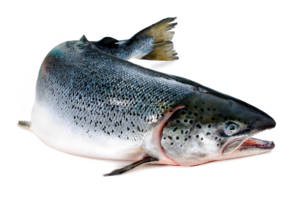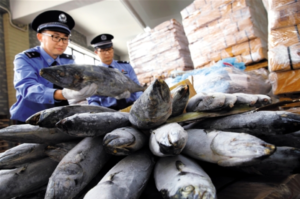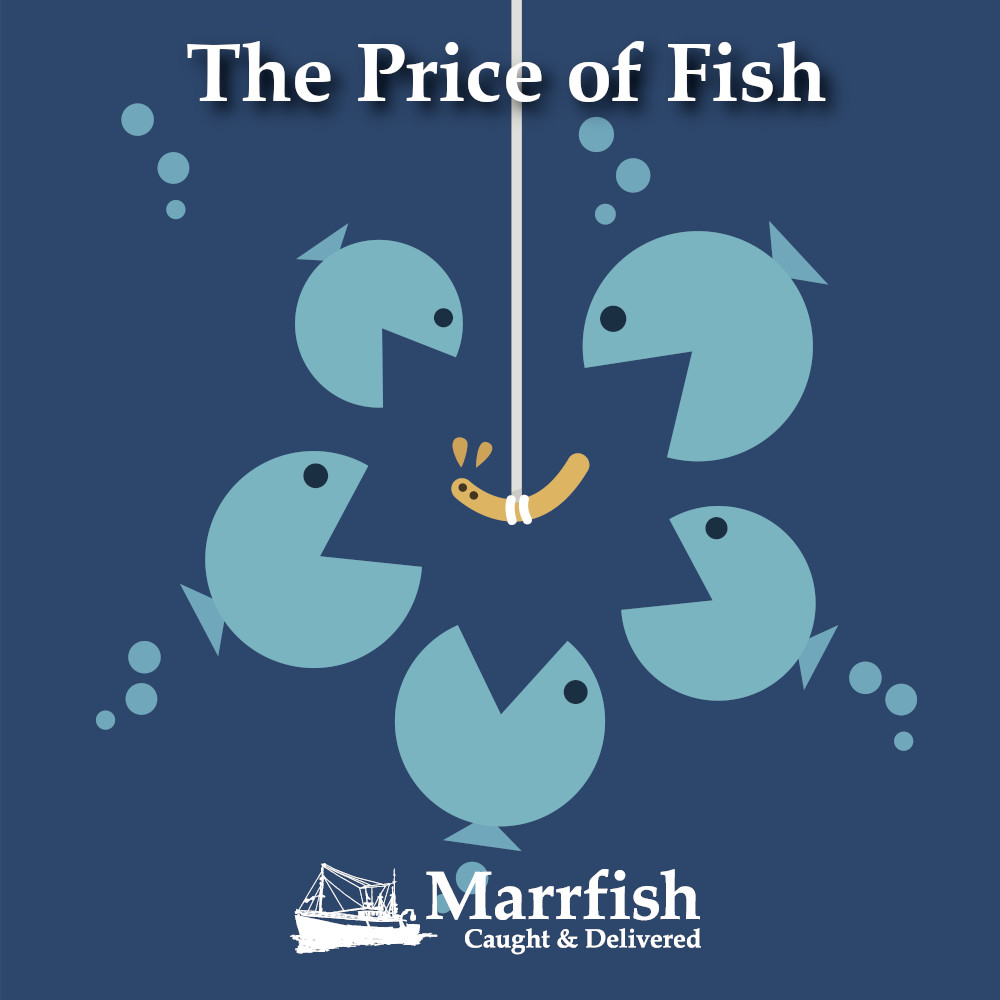We all prefer fixed prices for our goods and services, so why does the price of fish change so much?
The value of any item is determined by many factors, not just the cost to produce the item, but also demand. If an item is in short supply, but high in demand, prices will rise.
Supply and demand is a simple concept; a company will produce or stock a certain amount of an item and place it for sale. The more demand for an item, the more people will bid to pay for it, the higher its perceived market value.
 Fish supply can be affected by many factors, namely seasonality, sustainability and therefor availability. At certain times of the year some species of fish become unavailable, whether it’s due to a restriction in the name of sustainability (over-fishing) or restrictions designed to allow fish to reproduce and spawn without interruption, securing future generations of fish. At these times the fish will be less plentiful in supply, but buyers and their customers still want those fish and they will pay a higher price to buy them. If another buyer wants the same fish, they will have to pay an even higher price to outbid their competitor – very much like how an online auction works.
Fish supply can be affected by many factors, namely seasonality, sustainability and therefor availability. At certain times of the year some species of fish become unavailable, whether it’s due to a restriction in the name of sustainability (over-fishing) or restrictions designed to allow fish to reproduce and spawn without interruption, securing future generations of fish. At these times the fish will be less plentiful in supply, but buyers and their customers still want those fish and they will pay a higher price to buy them. If another buyer wants the same fish, they will have to pay an even higher price to outbid their competitor – very much like how an online auction works.
Bad weather is a huge factor the affects the price of fish – a severe storm can hinder a fishing boat at sea and if the conditions are bad enough none of the fishermen will go out to sea. That has a knock-on effect as there will be less fish available for purchase, leading to price rises.
Fish are sold on markets all over the UK each day of the week, the biggest of these being the market we operate from in Peterhead, Scotland. Fish markets operate a traditional style auction whereby fish buyers shout out their bids to secure the produce at the best price possible. Bidding wars can take place if two buyers both require the same fish. The true price of that fish will be reflected in the price their customers pay for the fish.
The toy industry regularly sees buying frenzies when a toy becomes popular with children, is limited in stock and then sells for a hugely inflated amount. In the computer industry, the rise in popularity of crypto-currency and the digital “mining” of crypto-currencies has caused a worldwide shortage for PC graphics cards meaning there are less in circulation leading to a huge rise in price.
Supply and demand can affect any industry.
What’s happening with the price of fish, namely Salmon?
Salmon is a staple on British menus and has been growing in popularity year after year. Smoked salmon, or unsmoked, are both popular whether it be at offered for sale at an event or for cooking at home, salmon is a fish in high demand everywhere.
As a nation, China have developed a taste for salmon which only serves to increase demand on salmon producers across the world. Recent surges in demand in China for Salmon have vastly contributed to the rises in price. China like salmon and will pay a high price for it. In fact, this has been happening a lot in the last 12 months or so and looks set to continue.
A boat was recently intercepted by Vietnamise authorities that was attempting to smuggle tons of salmon into China. The smuggling ring managed to get away with smuggling $98 Million worth of Salmon. That fish was seized and destroyed leading to a knock-on effect regarding the available supply. With the rise in popularity of Salmon in China, demand is incredibly high, supply is becoming more limited and is driving up the price for customers all over the world.
 Why not just catch more Salmon?
Why not just catch more Salmon?
The issue is not as simple as catching more fish. Fishermen have to adhere to fishing quotas – a limit set on individual species of fish to prevent over-fishing – and only a certain tonnage of any species of fish is allowed to be caught in any year. If we didn’t stick to these limits, then fish would start to vanish from our oceans.
Salmon that live in the wild aren’t vast in numbers (not enough to meet demand) and due to this we mainly consume farmed salmon, grown in pens placed in lakes or the sea. This is the only way enough salmon can be produced to meet demand, and with a country the size of China suddenly creating an additional spike in demand, it’s becoming a very limited resource. Salmon farms only have a certain capacity and are heavily regulated, so they must adhere to keeping a certain number of fishes in a pen, which limits the output of each farm.
By law, fish require a certain amount of room to swim around for their wellbeing. Adding more fish into the pen is not legal or practical, and the investment required to increase the number of pens at a farm is massive and not something that can be done overnight – thus the demand remains high and supply limited.
What can we do?
There’s not much any of us can do to keep the price of fish low or stable. Perhaps attempting to move consumers to look at more sustainable and cheaper species is the only way the ensure we are utilising the fish we have available around our coastlines and paying less for it. Alternative or completely different fish would ease demand on salmon production and prices and expose consumers to new flavours and textures of fish.
There’s a whole ocean of different species out there, let’s start to utilise them.

